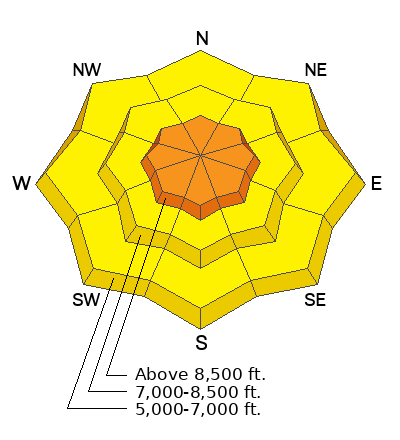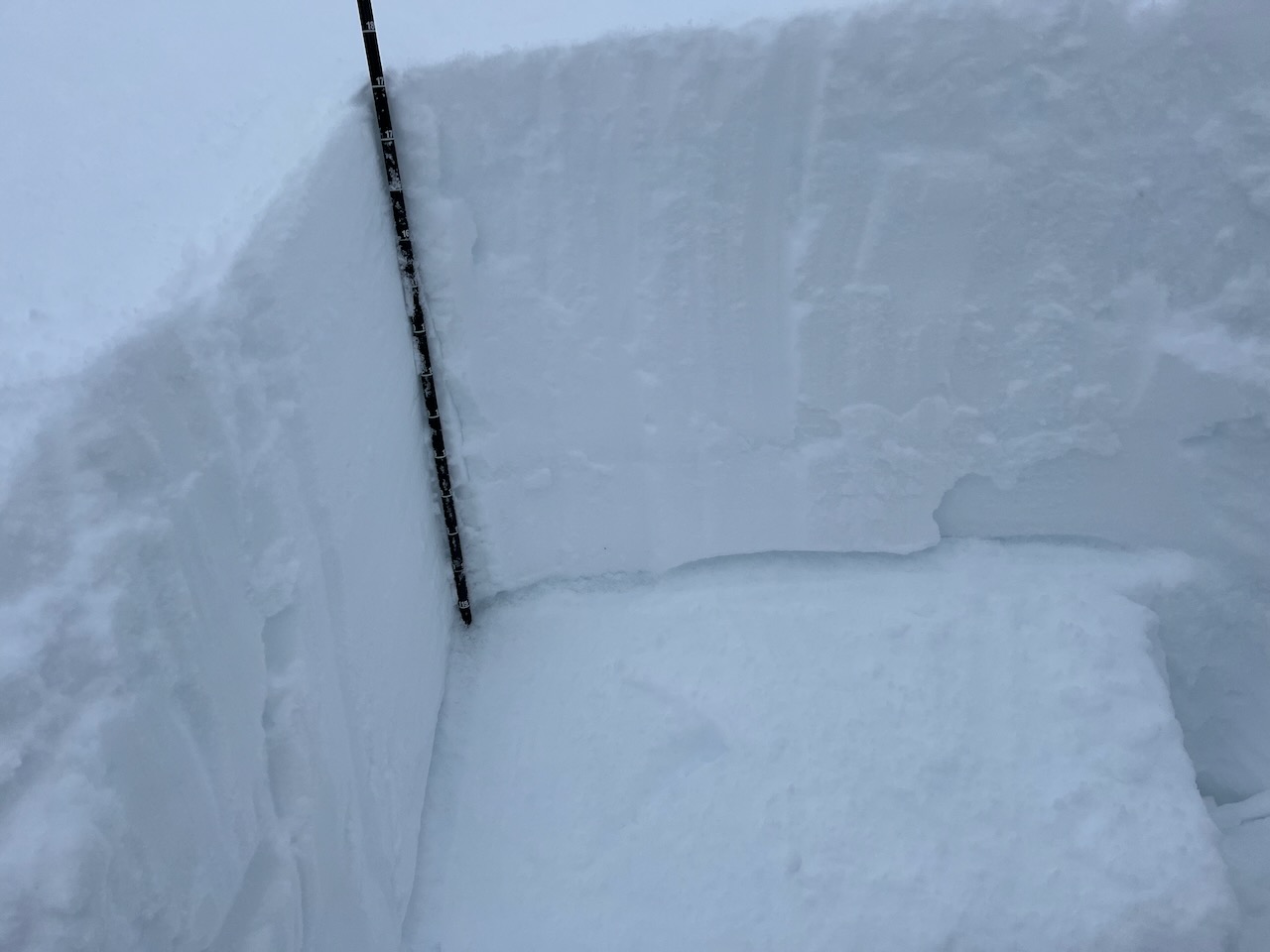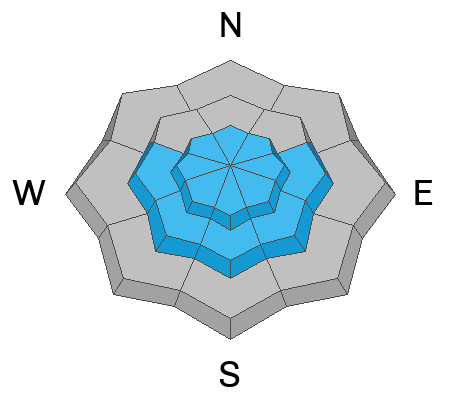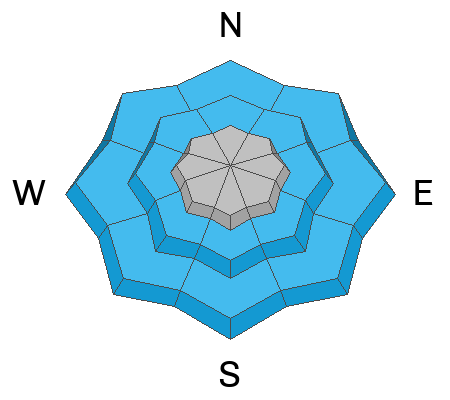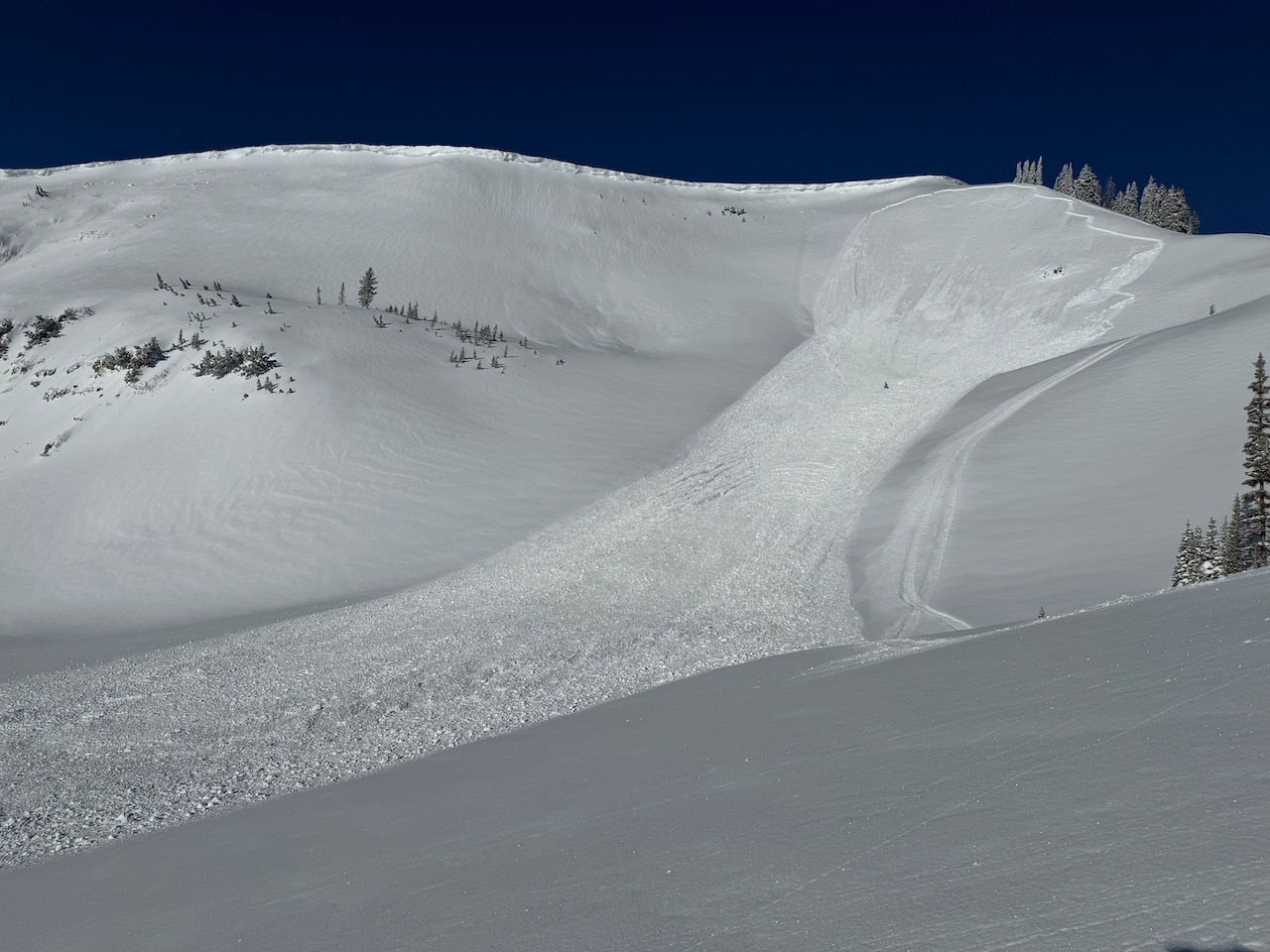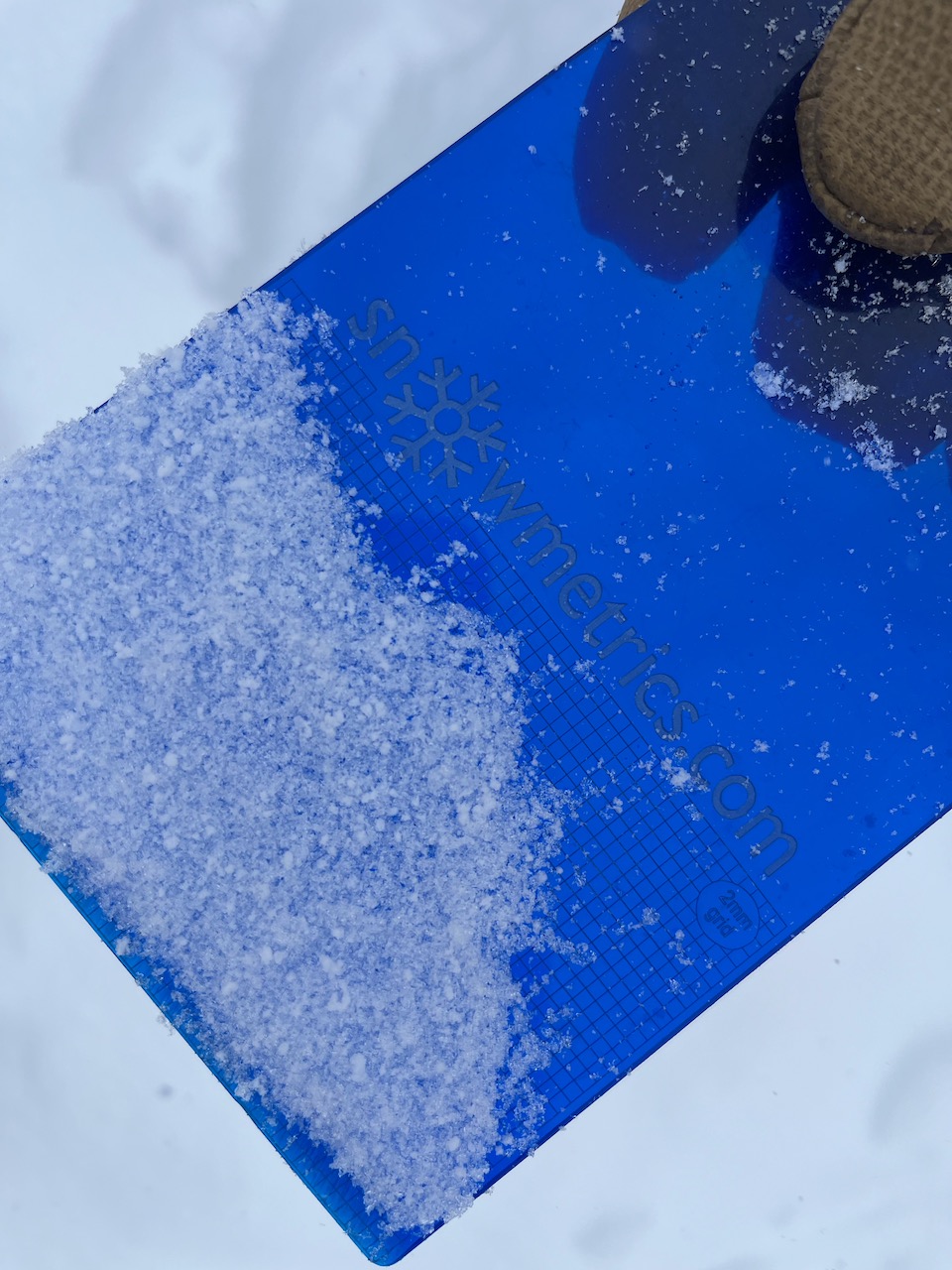A warm, strong storm moved through the Logan area yesterday and overnight, dropping about 3-7 inches of heavy, dense snow across the zone. With yet another load of weight added, dangerous conditions still exist where wind-drifted snow has overloaded the old snow/new snow interface from 2/14. Riding conditions are good at higher elevations with colder temperatures, away from wind-affected areas. Today, your best option is high-elevation, sheltered terrain. Human-triggered slab avalanches up to 2-3 feet deep are likely on drifted upper-elevation slopes steeper than 30°.
The Tony Grove Snotel at 8400' reports .7" SWE (snow water equivalent) from yesterday, it's currently 28° F, and there is 102" of total snow (121% of normal). The wind is blowing from the west this morning in the 20's mph with gusts in the 30's mph at the 9700' CSI Logan Peak weather station. At 9500' on Paris Peak, winds from the southwest are blowing around 7 mph, and it's 22° F.
The next storm is rolling into Utah this morning but the narrow band is headed south of the Logan zone. While the mountains south of I-84 get clobbered with snow, rain, lightning, and thunder, we'll get just a few more inches of dense snow today with fairly mild winds. The National Weather Service's Winter Weather Advisory continues through tonight. 8500' temperatures will be about 35° F today with winds blowing from the southwest at 9 to 16 mph. Expect unsettled weather through Thursday morning, with a few more inches of snow possible. The skies clear Thursday and we'll have sun and warm temperatures Friday and Saturday, The next chance for snow is potentially Sunday.
The buried layer of very small faceted grains from 2/14 is still easy to find but is becoming less reactive.
No avalanches were reported yesterday in the Logan zone but there was a fairly large natural avalanche just to our south on the east face of
Ben Lomond on Sunday.
Check out local observations and avalanches
HERE.

